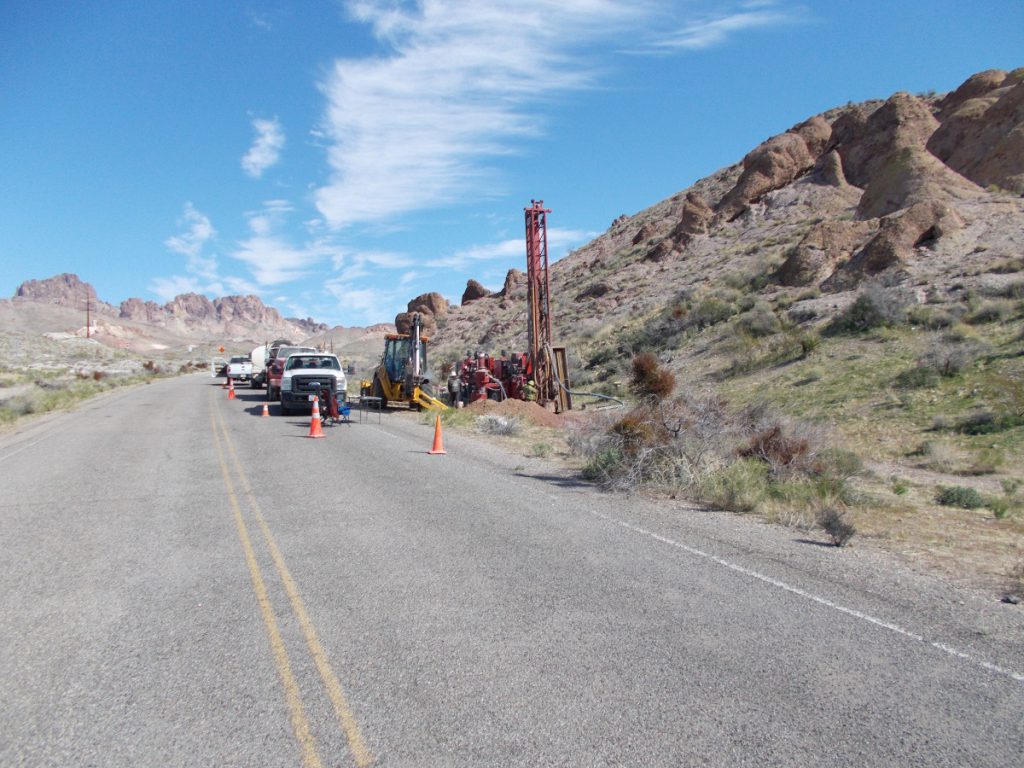Arizona Silver drills 0.96 g/t gold over 78.7 metres at Philadelphia project, Arizona

Arizona Silver Exploration Inc.‘s [AZS-TSXV; AZASF-OTCQB] drilling at the 100%-optioned Philadelphia gold project, Mohave County, Arizona, has again extended the dip extent of broad stockwork and high-grade vein gold-silver mineralization. Assays have been returned for hole PC22-91 with assays for two holes awaited.
Core hole PC-22-91 (terminated in mineralization) was a deep test of the Philadelphia vein system, drilling down-dip of the high-grade vein encountered in core holes PC-22-86, PC-22-87, PC22-88 and in reverse circulation (RC) holes PRC21-81, PRC21-82, and PRC21-83. The hole successfully intersected the vein 60 metres down-dip of PC-22-88.
Drilling has now defined high-grade mineralization over a dip length of more than 200 metres with the system open at depth. Furthermore, in PC-22-91 the lower grade (mostly footwall stockwork mineralization) extends over a thickness of 78.7 metres, from slightly above the high-grade vein to the bottom of the hole. The grades and vein breccia textures were improving toward the bottom when the hole was lost at 252.1 metres due to unstable ground conditions. The hole had been designed to potentially continue in mineralization for a further 22 metres.
Details of the uncut drill length intercepts include the high-grade vein interval of 176.59 to 178.96 metres, or 2.38 metres, grading 6.71 g/t gold and 22.6 g/t silver. The total mineralized zone of 173.5 to 252.1 metres (end of hole), or 78.7 metres, returned 0.964 g/t gold and 9.20 g/t silver.
Greg Hahn, vice-president of exploration, commented: “On the drill section containing hole PC-22-91 the vein continues uninterrupted for 200-plus metres down-dip. However, based on vein textures, clay mineralogy and geochemistry, we believe we are still above the heart of the boiling zone of the system where the highest grades would be anticipated. In due course deeper drilling is a high priority.
“We have drilled the vein and the adjacent lower-grade stockwork mineralization from two drill pads located 300 metres apart with complete success. All holes on these sections intersected gold-silver mineralization as predicted. One of the two unassayed drill holes (PC-22-92T) is an important confirmation of earlier RC drill holes that intersected 100-plus metres of mineralization. The second awaited hole (PC-22-93) is located 350 metres to the north of PC-22-91 and intersected good stockwork quartz mineralization. I look forward to drilling this northern extension of mineralization.”
Updated geologic sections and photos of core from the completed holes are posted to the company’s website.
At the Northern extension from the site of the deep drill hole reported in this release, the company has no drilling data northward except for recently completed hole PC-22-93 referenced above, other than an area of historic drilling.
This open extension has both vein and stockwork mineralization over a width of 30 to 80. metres. Up to 26 RC drill holes (approximately 5,000 metres) have been designed to test a target area approximately 500 metres long north of drilling completed recently to a vertical depth of approximately 100 metres.
At the southern gap from the deep drill hole reported in this release the company has no drilling to the south for a strike length of 300 metres. This southern gap is bounded to the south by an array of drill holes, including the confirmation drill hole PC-22-92T (results awaited) mentioned above. Given that RC drilling on the northern gap is considerably more cost-effective to perform than the diamond drilling necessary for the southern gap, the RC program will be scheduled first. Rig availability is anticipated in the fall.
In the meantime, the company will compile the results of historic drilling north of the northern gap. That drilling returned potentially economic-grade widths of stockwork mineralization in the vicinity of historic mining. Results will be reported.
